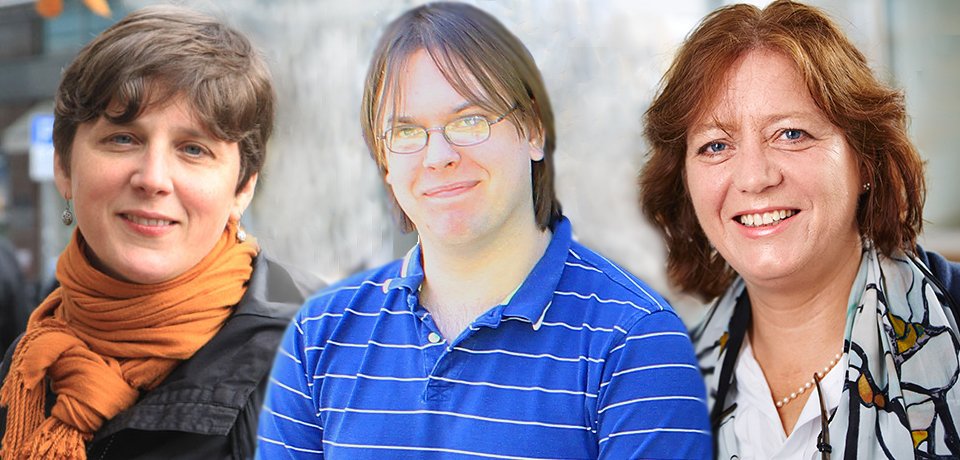Marcus Ladds, Ingeborg van Leeuwen, Sonia Lain et al publish in Nature Communications

Researchers in the Sonia lain and David Lane groups at MTC have recently published in the journal Nature Communications.
How would you describe the research behind this publication?
Our paper describes the development of a new family of compounds, the HZ series, that bind to an enzyme called dihydroorotate dehydrogenase (DHODH). This enzyme is part of a series of enzymes responsible for making pyrimidine ribonucleotides, the building blocks of our RNA. Deoxynucleotides, the building blocks of DNA are synthesised by cells from ribonucleotides. Because a deficiency in deoxynucleotides can kill dividing cells, a reduction in ribonucleotide levels by targeting DHODH can be detected by healthy cells as a warning sign that tells them to stop before they start making new DNA. However, many cancer cell types do not respond to this warning efficiently, and carry on synthesising new DNA with insufficient building blocks. This leads to serious defects in newly made DNA strands and cell death.
What methods did you use?
How did we find these molecules? We used a compound screening method that uses the activity of a key anti-tumour protein called p53, the guardian of the genome. We found a number of interesting compounds, but selected one that had the right chemical properties for our study and named this compound HZ00. We found that HZ00 was quite good at killing tumour cells in culture, but demonstrated a very mild and reversible effect on normal human dermal fibroblasts. We also found that HZ00 altered p53 levels by increasing the amount of new p53 made by the cells. One thing that was chemically interesting about HZ00 is that it has what is called a chiral centre. These findings justified our group starting the painstaking process of finding the exact target of HZ00 inside a cell.
Through our knowledge of p53 biology we deduced that reduction in the levels of ribonucleotides in the cell could be responsible for the effects of HZ00. We then tried systematically adding ribonucleosides to cancer cells that were treated with HZ00 to see if we could prevent the effects of HZ00, and noted that the ribonucleoside uridine could protect cancer cells from HZ00. This led us to think that HZ00 could be targeting an enzyme in the pathway that synthesises new pyrimidine ribonucleotides. Through addition of both products and substrates of enzymes in this pathway, we found that the target of our compound was likely to be the enzyme DHODH. Now we had a prospective target for HZ00, so we carried out assays using purified DHODH enzyme to see if we could directly inhibit its catalytic activity with HZ00. Indeed, it was very exciting to see that the activity of DHODH was directly affected by HZ00. At this point we also conducted analysis of compounds with similar structures to HZ00 to see if we could find more potent compounds. These studies yielded the molecule we named HZ05. At this point we obtained a crystal of the enzyme DHODH with only one chiral form of HZ05 bound to it. This, along with tests in cells themselves, confirmed that only the R-enantiomers of the HZ compounds were able to bind effectively to DHODH at low concentrations and also kill cancer cells.
We then investigated the potential development of these compounds into cancer therapeutic agents by combining with other compounds. One such compound, called nutlin-3, that prevents the cell from breaking down the protein p53, appeared to work well in combination with both HZ00 and HZ05. We also found that adding HZ compounds to cells before nutlin-3 appeared to work better. We then came up with a model whereby HZ compounds increase p53 synthesis and that if these cells continue to divide (i.e. if they do not respond to the warning signs as many cancer cells fail to do) then adding an inhibitor of p53 degradation such as nutlin-3 causes them to die.
Results
These studies demonstrated that an unbiased screen for compounds using an assay in cells themselves can yield interesting targets that can be investigated for developing future therapies against cancer.
More information about this publication
A DHODH inhibitor increases p53 synthesis and enhances tumor cell killing by p53 degradation blockage.
Nat Commun 2018 03;9(1):1107
This publication is also highlighted in Nature Communications therapeutic highlights section
